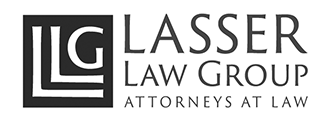The NYC Zoning Resolution (ZR), a statue that governs NYC zoning regulations, allows property owners to transfer unused air rights (a.k.a “development rights”) to neighboring properties. The transfer of air rights is a useful tool to either (i) purchase and expand a development or (ii) sell and realize a profit out of air rights you have no intention of using.
A few simple examples are a good way to explain and illustrate the concept. If you own a 20,000 s/f building on a lot that allows you to build 30,000 s/f, you can sell the 10,000 s/f of unused air rights to a neighbor. Similarly, if you are contemplating developing a 20 story building and many of your neighbors have 10-15 story buildings, there may be unused air rights to purchase from the smaller buildings that can be added to yours.
These are not simple transactions. There are certain pre-conditions to an air right transfer as follow: (i) the two properties must have a common border of at least 10 feet; (ii) the properties must be in the same zoning district; and (iii) the buyer must be able to utilize the air rights within the density parameters that govern the buyer’s property. For example, if the buyer’s property has a 10-floor height limit, the buyer cannot use the air rights to build an eleventh floor. However, the buyer could possibly build a wider or deeper building if permitted by the ZR. Therefore, before purchasing air rights, the buyer must confirm that the transferred air rights can fit within the zoning parameters that govern the buyer’s property, known as the zoning envelope. The zoning envelope sets the maximum height, width, depth and yard requirements for a building on a particular parcel. Typically, there is room to add more air rights into the zoning envelope.
Once due diligence is completed and it is determined that the air rights transfer is viable and beneficial to both parties, the next step is preparing the transfer documents. The principal transfer document is the Zoning Lot Development Agreement, known as a ZLDA. The ZLDA recites the terms of the air rights transfer between the buyer and seller. The ZLDA establishes that once air rights are transferred, they are the property of the buyer and the seller can never utilize them, similar to a deed that transfers fee title from one party to another. The ZLDA also states that the buyer retains any air rights already attached to the buyer’s parcel and that the seller retains any air rights already utilized on seller’s parcel. These are known as the “retained development rights”.
In addition, the ZLDA permanently mergers the buyer and seller’s tax lots into a single zoning lot. The creation of a single zoning lot that contains both buyer and seller’s tax lots is required because air rights can only be transferred between tax lots are that are within the same zoning lot. There is no limit as to how many tax lots can be merged into a single zoning lot. In some cases, a developer is purchasing unused air rights from several sellers, resulting in a single zoning lot containing multiple tax lots.
It is important to note that ZLDA’s do not transfer ownership rights of the tax lots, known as fee title. Full ownership of the fee is retained by buyer and seller for their respective tax lots. Either party can sell or transfer its fee to a third party, take out a new mortgage or refinance an existing one without needing the other party’s permission. This is important because often the seller is a small property owner and the buyer is big developer. The seller does not want the developer dictating ownership rights. Without this protection, which is recited in the ZLDA, small owners would be loath to sell air rights to big developers.
The ZLDA can also transfer a light and air easement between seller and buyer. If buyer’s development looks over seller’s property towards an attractive view, the buyer may want to have windows facing that direction. In that case, the seller can grant buyer a light and air easement over seller’s property. This easement caps the height of seller’s building at its current height. Buyer can now construct living room and bedroom windows facing over seller’s property without fear of being blocked. Even if the seller redevelops their parcel, any such redevelopment cannot exceed the easement height limit.
The ZLDA does not set the financial terms of the air right’s transfer. Financial terms of the transfer are set forth in a Purchase and Sale Agreement (PSA) that is similar to a property contract of sale. An air rights PSA has the same basic terms as a contract of sale: purchase price; down payment; closing date; clean title requirements, etc.
With proper due diligence and a well drafted ZLDA, an air right transfer is a win-win deal. Because the seller has no use for the air rights, they will sell them below the market rate because they still realize a profit from nothing. For the buyer, once the air rights are attached to the buyer’s land, the buyer can value them at full market for the purpose of either flipping the project or constructing a building. In the end, both parties make money out of thin air.
Get the LLG Real Estate Video Podcast and Quarterly Newsletter delivered to your inbox.



